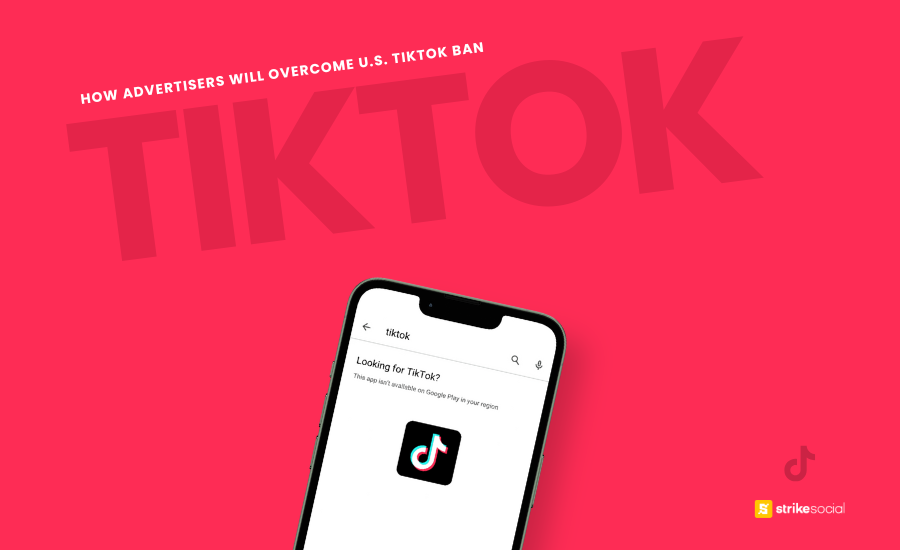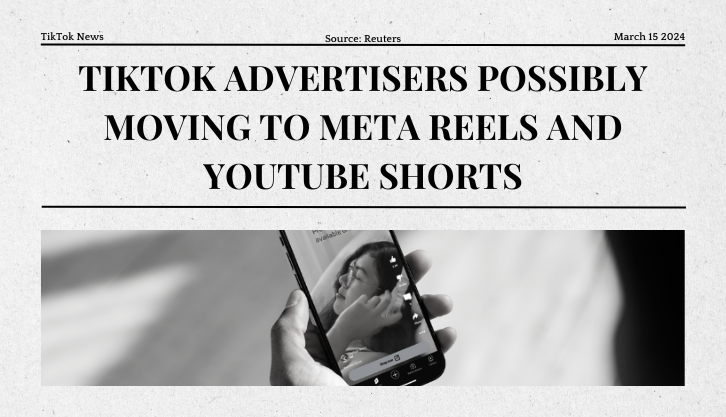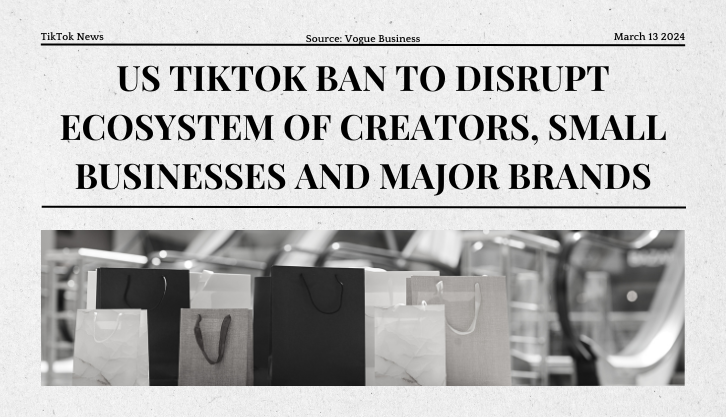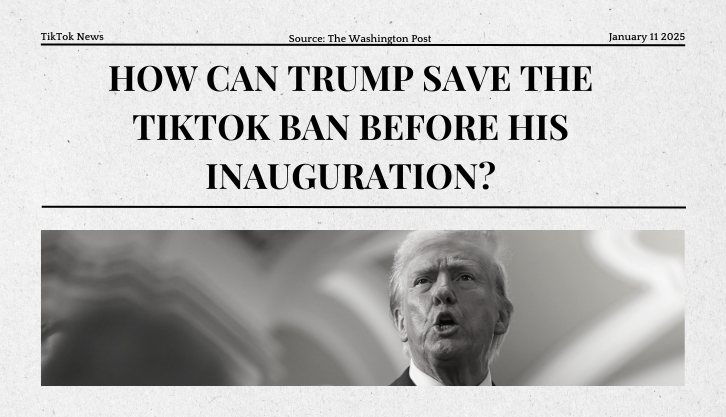Strike Overview
- The looming news of the US TikTok ban is sending ripples through its community. Although TikTok has only been around for less than a decade, it has captured the hearts of 150 million users in the US alone.
- The ease with which TikTok was adopted raises the question: will it be as easy to move on from it? While Meta Reels and YouTube Shorts emerge as the next top advertising platforms, are TikTok users truly ready to make the switch?
- With growing concerns, brands must peer into the horizon and consider the possibilities ahead in the wake of this recent development.
Jump to Section
Get exclusive content on paid social media.
Join our mailing list for the latest updates.

This post was updated in January 2025 to provide you with the latest information.
After News of the US TikTok Ban, How Can You Shift Your Social Media Ad Strategies?
The latest U.S. TikTok ban updates include a tentative shutdown date set for January 19, users migrating to another Chinese social app called RedNote, and incoming President-elect Trump planning to attempt saving the app after his inauguration.
Despite the challenges posed by the upcoming TikTok ban, it seems that the concerns primarily stem from lawmakers, attributed to their limited understanding of the technology, rather than from the US audience, which has shown remarkable composure. While significant and deserving of attention, the situation about the US TikTok ban presents an opportunity for us to prepare you for the inevitable and forthcoming shift.
The Uncertain Future Post-TikTok Ban
It all started in 2020 when then-US President Donald Trump viewed TikTok as a national security threat and announced that the government was considering banning the app. Fast forward to March 13, 2024, when the Senate passed the bill approving the legislation that forces TikTok to sell ownership from a Chinese-owned company to a United States-owned one.
While the TikTok app may not be a wholly foreign-owned enterprise (WFOE), ByteDance has a diverse ownership structure: 60% by global investors, including those from the U.S., 20% by its Chinese co-founders, and 20% by its employees, which includes thousands in the U.S.
Further Reading
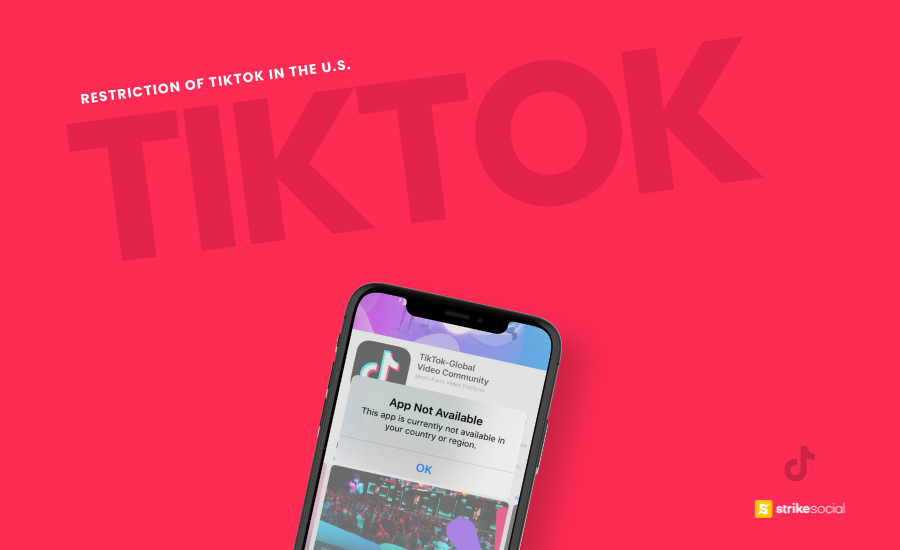
Map Out the U.S. TikTok Ban Timeline
Reflect on TikTok’s evolution in the US—from a platform for dance trends and viral skits to a centerpiece of national security debates. Explore the multifaceted story of the app’s rise and the controversies that have culminated in TikTok being banned from government access and potentially from US users entirely.
Despite ongoing discussions and legislative actions in the works for months, TikTok’s popularity remains strong. However, the threat of the U.S. TikTok ban is a real possibility. This raises important questions for advertisers about adapting and preparing for a future that might change TikTok’s operations drastically.
What Does the Bill to Ban TikTok Mean for Future Campaigns?
Should it retain its affiliation with ByteDance, its Chinese parent company, the potential ban of TikTok in the United States presents a complex scenario for advertisers utilizing the platform. Here, we examine what such a scenario could mean for brands and advertisers capitalizing on TikTok views and engagement:
Reach and Targeting Challenges
- With the TikTok app banned, a primary consequence would be the immediate loss of the US audience demographic. Advertisers who have been targeting American users might find themselves asking, “Why can’t I target USA on TikTok ads?”
- The answer lies in the unavailability of TikTok within the United States, compelling those who wish to reach American consumers to pivot towards TikTok local ads.
Accessibility of Digital Assets on TikTok
- Another significant hurdle would be accessing the digital assets you have uploaded on TikTok, including videos, music, and your TikTok shop.
- As TikTok and its users brace for the impending ban, the app will provide an option for users to download their data to retain their personal information. Once the U.S. TikTok ban goes into effect, the videos uploaded may become inaccessible, requiring creators and brands to download what they can while they still have the chance.
- Although TikTok has tried to store US user data within domestic data centers in Northern Virginia and Hillsboro, these measures may not suffice to ensure access to these assets once the TikTok ban is implemented.
Budget Allocation Concerns
- The legislative journey towards potentially banning TikTok, stretching over four years, has already sparked widespread concern among advertisers regarding their ad budget allocations on the platform.
- For advertisers who have already set their 2025 budgets and are concerned about the US TikTok ban, the risks are becoming increasingly tangible. It is crucial for advertisers to stay cautious and adaptable with their budget planning, especially for mid-Q1 2025 and beyond.
Contact Us
Step into 2025 with a SWAS (Software with a Service) AdTech agency partner who can optimize your ad costs while boosting performance.
How Can TikTok Advertisers Adapt to the Change?
The possibility of TikTok being banned in the U.S. is becoming increasingly likely. Even if a request for another 270-day extension is approved, delaying the ban until October, TikTok advertisers in the U.S. must take proactive steps to adjust their strategies.
Below are key approaches to consider in light of the uncertain future concerning TikTok getting banned in the U.S.:
Adjusting your Audience Targeting Strategy
If the United States is no longer available for targeting, you can adjust your location targeting settings within TikTok Ads Manager. This is particularly useful for international brands, ensuring that budgets are not wasted on an unavailable US audience.
Alternatively, you can identify countries with significant US/American tourist populations as alternative targets. This approach helps maintain engagement with American users indirectly, for example, through their top travel destinations. For instance, the top 5 American travel destinations in 2024 that can be targeted on TikTok are United Kingdom*, Canada, Japan, Indonesia, and Italy.
* Targeting the United Kingdom (GB) is only available for managed accounts in Australia (AU).
Safeguarding Digital Assets
In anticipation of TikTok assets potentially becoming inaccessible, consider migrating them to alternative platforms like Meta and YouTube. Expanding to these platforms secures your assets and opens up new avenues for short-form video advertising.
- Reels is dominating on Facebook and Instagram, with users spending approximately two-thirds of their time engaging with video content. Moreover, Instagram alone is projected to account for over 50% of U.S. ad spend in 2025.
- Advertisers transitioning to Shorts in 2025 should note that 43% of U.S. ad buyers are already active in this space. Optimizing YouTube ad costs is achievable with the support of the right AdTech agency. By leveraging the flexibility to optimize across Shorts, feed, and even CTV, you can achieve high performance at competitive costs.
Keep producing vertical, short-form content to align with your audience’s established viewing habits and preferences, ensuring a consistent user experience across platforms.
Budgetary Considerations and Planning
Anticipate potential changes by formulating a plan that includes TikTok but also consider a strategic reallocation of your budget towards alternative platforms.
For instance, in planning a Super Bowl 2025 campaign where TikTok is a primary channel, consider reducing its budget while increasing allocations for Meta and YouTube. Here’s an example:
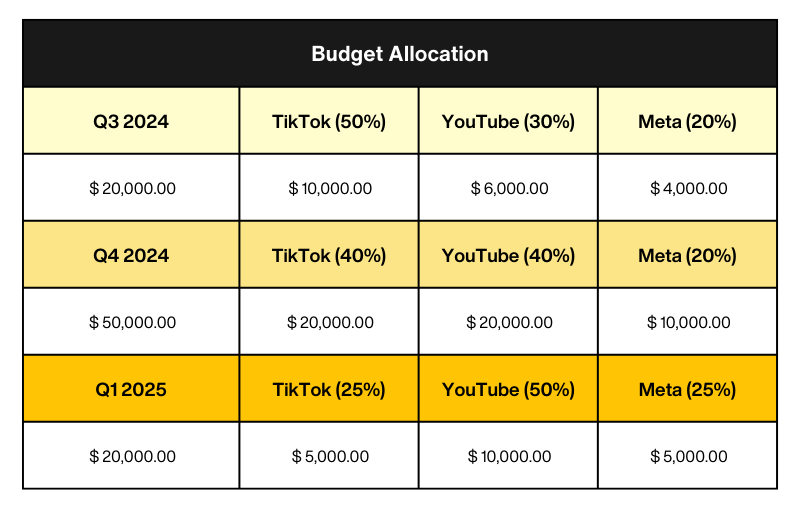
This strategy involves adjusting the advertising budget, initially allocating 50% to TikTok in Q3 2024, then reducing it to 40% by Q4 2024. To address anticipated changes proactively, the plan includes further decreasing the TikTok budget to 25% by Q1 2025. The funds saved from this reduction will be shifted towards YouTube advertising, capitalizing on its Shorts feature, which closely mirrors the short-form video format popularized by TikTok.
By proactively adjusting audience targeting settings, migrating digital assets, and reevaluating budget allocations, you can stay ahead and maintain your brand’s advertising strategies with minimal disruption.
What Opportunities Lie Ahead for TikTok Advertisers?
With the US TikTok ban on the horizon, it’s evident that adaptability is key. The risk of TikTok becoming inaccessible overnight highlights the need for proactive planning and strategic foresight. Being caught off-guard by TikTok’s potential exit from the US market could significantly impact your advertising efforts. Still, with the right tools, you can turn these challenges into opportunities for growth and innovation.
Collaborating with an advertising partner capable of navigating these uncertainties is crucial. Our experienced team offers essential insights for expanding your advertising to other platforms, preparing you for any outcome of the U.S. TikTok ban. Arrange a consultation with us to explore how your advertising strategies can continue to thrive.


